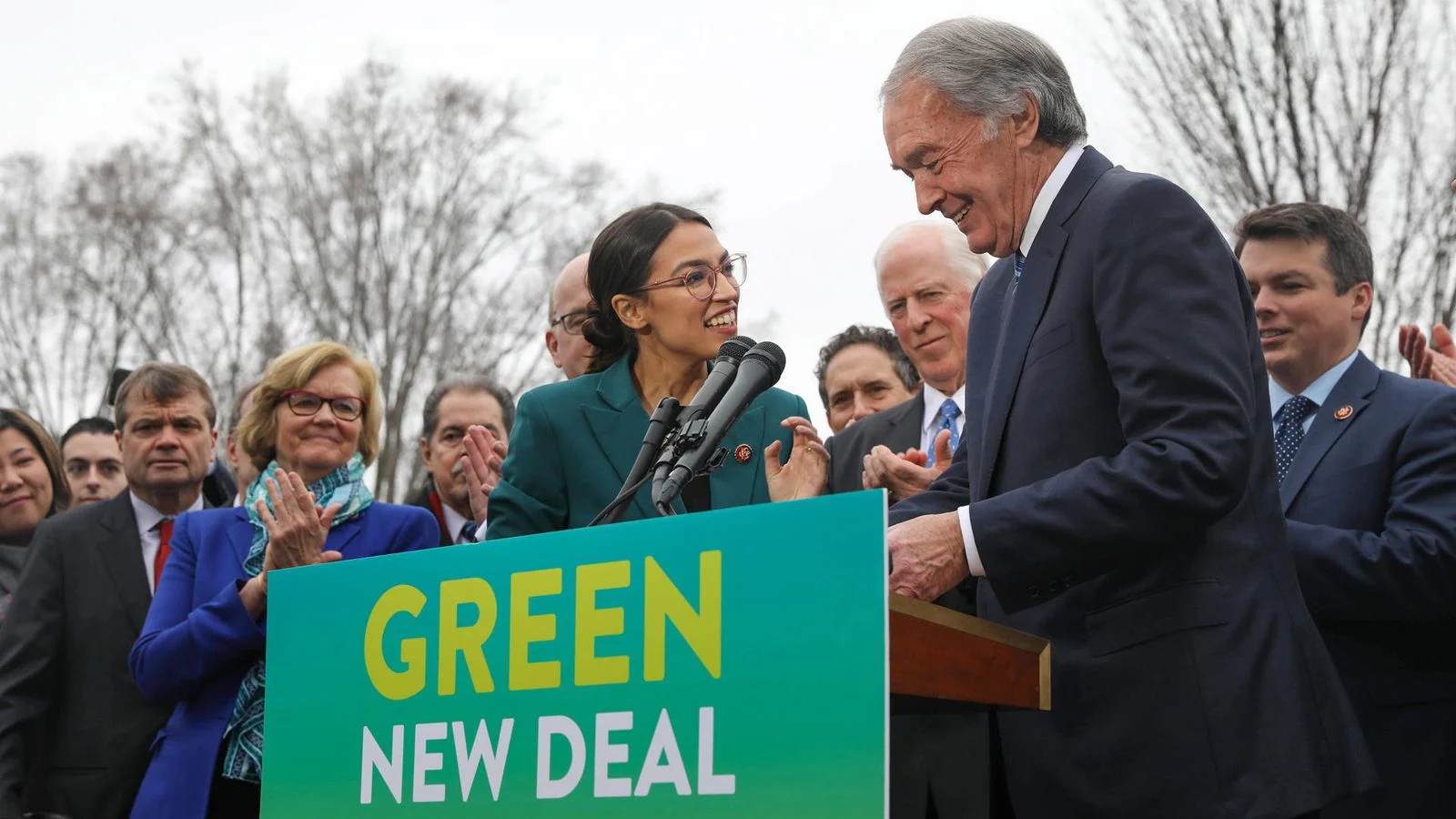Abacus: Is The Green New Deal Worth It?
Senate Democrats | Flickr
The Green New Deal promises economic stability while transitioning to 100 percent renewable source of energy in the next 10 years.
After decades’ worth of long battles between Democrats and Republicans about the effects of climate change, the inability to move past a mere discussion has pushed the young Democrats towards proposing one of the most radical ‘green’ deals in the history of the country. Despite being a technologically advanced country, “the USA contributed to 20 percent of global green gas through 2014,” the Green New Deal stated.
The Green New Deal, drafted by Representative Alexandria Ocasio-Cortez and Senator Edward Murky, promises to battle irreversible climate change and creating jobs in the US economy, along with a demand for drastic changes in American Society. The bill aims at tackling issues like clean water, adequate health care, transportation and education. The bill also includes other commitments like universal healthcare and a stable job for everyone with reducing the wealth gap.
The bill includes a 10-year plan to convert 100 percent of the power demand in the US to green renewable energy with zero green-houses gas emissions. It also requires upgrading all existing buildings to meet the new energy efficiency requirements with expanding high-speed railroad transportation to reduce green-house emission. Cortez plans to invest in clean renewable energy and modernizing the energy grid infrastructure. These “smart” power grids that will be built or upgraded, are supposed to sustain the country on 100 percent clean energy.
The US energy consumption mounted to about 97.7 quadrillion Btu. About 80 percent of America’s energy comes from non-renewable source of energy while only 12.7 percent was renewable energy in 2018. The US saw a 3.4 percent rise in carbon dioxide emissions in 2018, the biggest in the past eight years. With the average temperature of earth rising every year due to climate change, the Green New Deal estimates that the United States will lose $500bn annually by 2100.
Hurricane Florence and Michael costing $24bn and $25bn respectively, the government would look for some alternatives to reduce such damages in the future. Phasing out green-house emissions and turning towards renewable sources of energy can reduce climate change and even reduce the number and intensity of natural storms over time. The manifesto, doesn’t however, talk about carbon taxes, the corner stone of environment activism.
The deal states that revolutionizing the energy sector of the economy with renewable source of energy will result in “massive growth in clean manufacturing in the United States and removing pollution from manufacturing industry.” Revolutionizing the manufacturing industry is equivalent to revolutionizing the economy.
In 2018, the manufacturing industry amounted to $2.33 trillion, contributing to about 11.6 percent to the total economic output of the country. This industry is also one of the biggest employers, creating more than 12.5 million jobs and employing up to 8.5 percent of the workforce in the economy. The manufacturing Industry is predicted to grow faster than the general economy and expects to have a 3.9 percent increase in 2019. Despite a booming manufacturing industry, wages have remained the same. The $7.25 per hour federal minimum wage hasn’t changed since 2009 despite increased worker productivity.
A booming industry with stagnant wages could lead to increasing the wealth gap in society. The Green New Deal tackles such issues with promising high minimum wages and job security. While the deal sounds like a fantasy, many critics have been calling it a ‘leftist’s overreach.’
The Deal comes with a big green price tag too. The freshman Rep. AOC recently said that to implement the Green New Deal, it may be required to raise up the top tax rate on incomes above to $10 million to 70 percent. Such requirements might paint the Green New Deal as a socialist agenda in the minds of conservatives.
Although promising, the makers of the Green New Deal also didn’t mention about the steady hidden monster: inflation. In 2018, the US market saw a 2.44 percent inflation after one of the biggest tax cuts in the economic history of the country. If higher pays are granted along with a revolutionizing manufacturing industry, it could very well spike up the inflation rate to well over three percent. This then leads to an asset bubble, making everything expensive quickly, until they become unaffordable and the market crashes.
Despite the sweet imaginary outcomes and a cool name, the Green New Deal might be a heavy deal for the US budget if AOC doesn’t come up with a new source of funding rather than raising the already high fiscal deficit. With a recession looming over the decade long bubble growth of the economy plans like the Green New Deal might be the ones that push the economy over the edge.
The Green New Deal has been gaining a lot of traction since its unveiling. Rather than being discussed amongst a handful of democratic socialist elites, it is now being embraced by all Presidential candidates for 2020 and can very well be the future of the country, depending on the outcome of the 2020 election.

